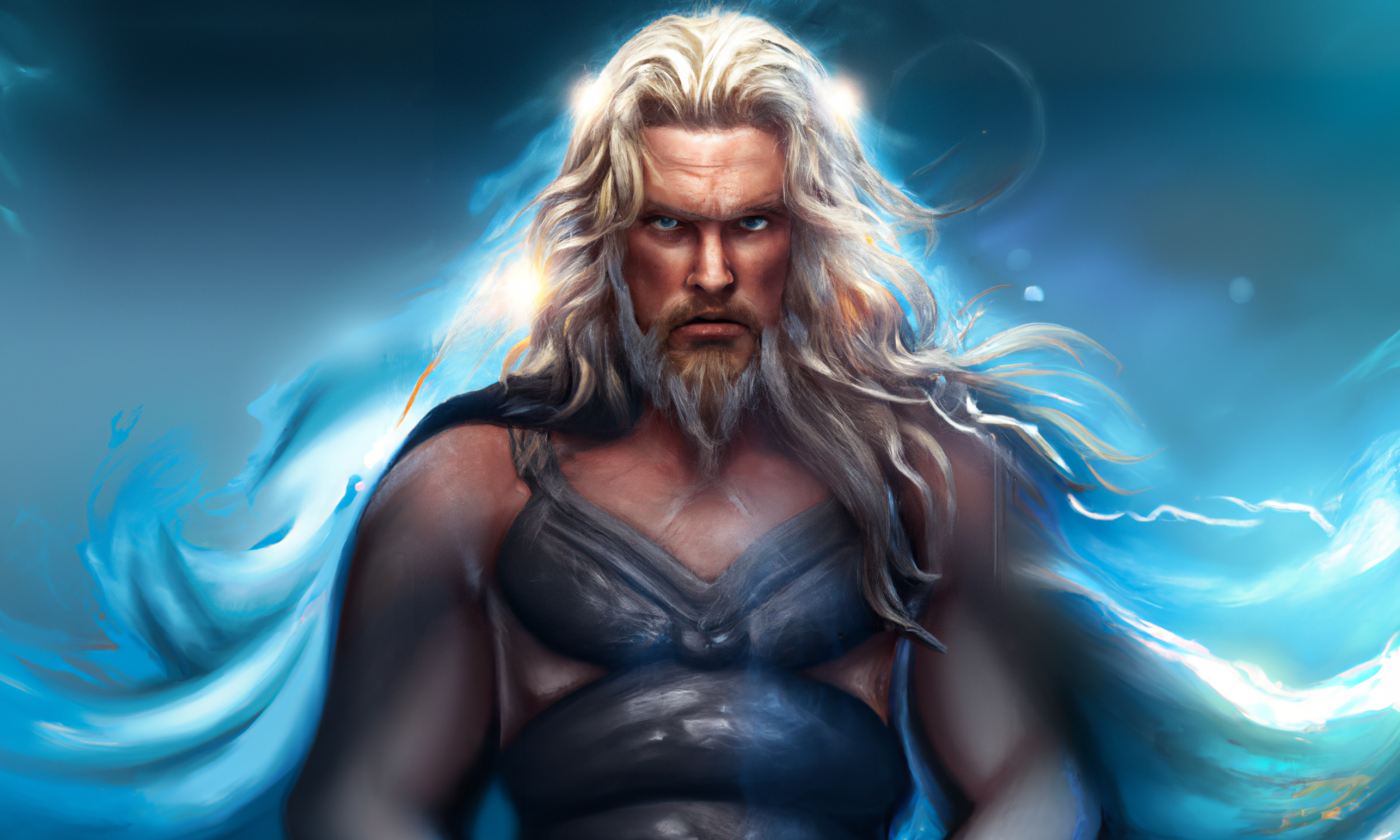ANGRBODA
Angrboda, The Harbinger of Mysteries:
In Norse mythology, Angrboda (also known as Angrboða) is a prominent figure among the giants. She is often depicted as a powerful and mysterious giantess, associated with darkness, chaos, and primal forces. Her name, which translates to "she who brings grief" or "she who announces sorrow," reflects her connection to anguish and suffering. Angrboda's most well-known role is as a mother figure and consort to the trickster god Loki. Together, they bore three monstrous children, each representing a formidable force in Norse mythology. The first is Fenrir, a gigantic and ferocious wolf destined to bring destruction during Ragnarok, the cataclysmic battle that signifies the end of the world. Fenrir's immense strength and uncontrollable nature make him a fearsome adversary to the gods. The second offspring is Jormungandr, a massive serpent that coils around the world, known as the Midgard Serpent or World Serpent. Jormungandr's size and power are unmatched, and according to prophecy, it will eventually engage in a climactic battle with the thunder god Thor during Ragnarok.
The third child is Hel, who rules over the realm of the dead, also known as Helheim. Half of her body is depicted as beautiful and radiant, while the other half is dark and decayed. Hel's realm is where the souls of those who died from illness, old age, or other non-heroic means are destined to reside. Angrboda's association with Loki and her role as the mother of these monstrous beings align her with chaos, destruction, and the untamed forces of nature. Her presence highlights the cyclical nature of life, death, and rebirth, as well as the precarious balance between order and chaos in the Norse cosmos. Angrboda is mentioned in various stories and poems, albeit in limited detail. One notable reference to her appears in the Prose Edda, a collection of Norse myths and legends written by the Icelandic scholar Snorri Sturluson in the 13th century. In the Prose Edda's section called Gylfaginning, Angrboda is described as a jötunn (giantess) who resides in the realm of Jotunheim. The Prose Edda briefly mentions Angrboda's relationship with the trickster god Loki. It states that Loki and Angrboda bore three monstrous children together: the wolf Fenrir, the serpent Jormungandr, and the half-dead, half-living Hel. This reference highlights Angrboda's role as the mother of these significant and formidable figures in Norse mythology. While there are no extensive tales solely dedicated to Angrboda, her presence in the mythological narrative is significant. She represents chaos, primal forces, and the darker aspects of the cosmos. Her connection to Loki, a central figure in Norse mythology, solidifies her place in the mythological framework.
In conclusion, Angrboda is a fascinating and enigmatic figure in Norse mythology. As a giantess and consort to the trickster god Loki, she occupies a unique position in the pantheon of Norse deities. Although her appearances in the myths are relatively brief, her significance is profound. Angrboda is closely associated with the underworld and the primordial forces of chaos and destruction. Her role as the mother of monstrous offspring, including the fearsome wolf Fenrir, the serpent Jormungandr, and the half-dead, half-living Hel, highlights her connection to the darker aspects of existence. She represents the untamed forces of nature, the shadow side of the cosmos, and the unpredictable aspects of life. While her portrayal might be seen as menacing or threatening, Angrboda's role in the Norse mythological framework is vital. Her offspring play crucial roles in the events leading up to Ragnarok, the final cosmic battle. Through her association with chaos and destruction, she serves as a catalyst for the inevitable end of the divine order. Angrboda's character serves as a reminder of the complexity and duality within Norse mythology. Just as the gods and giants are not purely good or evil, Angrboda embodies the paradoxical nature of existence. Her presence challenges the notions of order and stability, urging us to embrace the inherent chaos and transformation that underlies all aspects of life.
Related: Loki, Midgard, Loki’s Children, Fenrir, Jormungandr, Hel, Ragnarok, Thor, Helheim
Other Readings:





